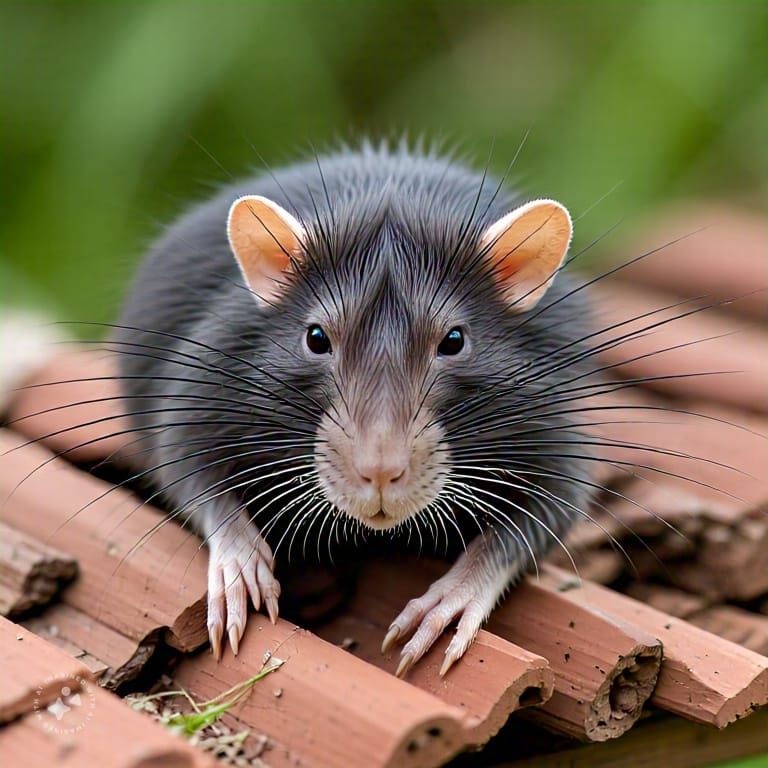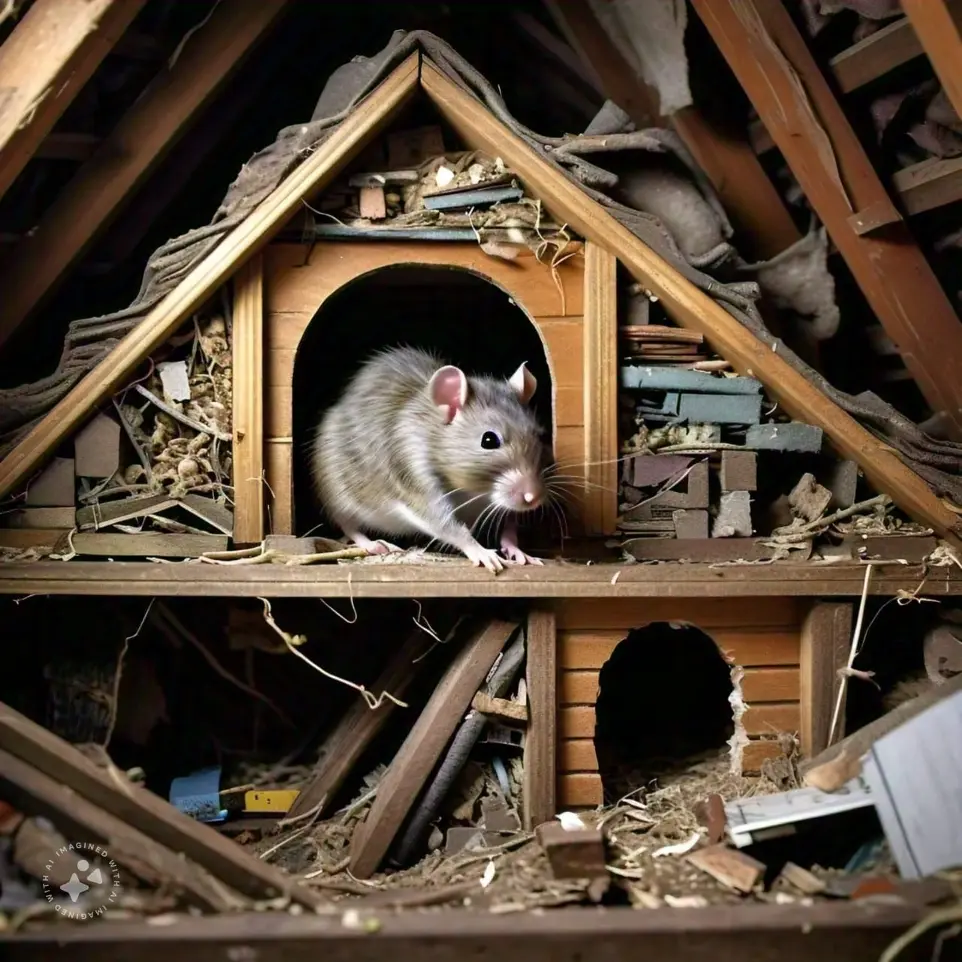Take Control of Roof Rats: Protect Your Home from Unwanted Visitors!
Physical Appearance
| Characteristic | Details |
|---|---|
| Scientific Name | Rattus rattus |
| Size | 13–18 inches (33–46 cm) including tail |
| Color | Grayish to black fur with a lighter underside |
| Tail | Long, slender, nearly as long as the body |
| Eyes and Ears | Large, dark, & prominent |
| Distinguishing Feature | Sleek, agile body with a long tail, distinct from Norway rats |

Feeding Preferences
Roof rat (Rattus rattus) are highly attracted to easily accessible food sources. They will feed on a variety of items, including grains, fruits, vegetables, meats, and sweets. Common targets include food storage areas, such as pantries, warehouses, and kitchens, where food is left exposed or improperly stored. They may also feed on spilled food, trash, or food residues around dining areas, food prep zones, and garbage bins. These rats can contaminate food with bacteria, droppings, and urine, posing a significant health risk in food facilities. Proper sanitation and secure food storage are essential to prevent roof rat infestations.

Habitat
Roof rats typically build their nests in high, sheltered areas within buildings, particularly where there is easy access to food and water. In commercial settings, they may nest in ceilings, attics, or behind walls, using materials like insulation, cardboard, or fabric to create a secure environment. These rats often seek out dark, quiet spaces near food preparation or storage areas, where they are less likely to be disturbed. They may also burrow into cluttered or rarely cleaned spaces, finding a hidden spot to rest and reproduce. Their nesting habits in these environments can lead to contamination of products and surfaces, creating a significant hygiene risk if left unchecked.
AIR Approach for Roof Rat:
- Assess: Inspect your home for signs of roof rat activity, such as droppings, gnaw marks, and nesting materials. Check high, concealed areas like attics, ceilings, and roof spaces, as well as outdoor areas like trees and vegetation, to assess the severity of the infestation.
- Implement: Use targeted treatments such as rodent baits, traps, and rodenticides. Seal entry points with materials like steel wool or hardware cloth to prevent roof rats from entering. Remove potential food sources and reduce clutter in high areas to discourage nesting.
- Review: Regularly monitor your property for signs of continued rat activity and adjust treatments as needed. Continue preventive measures such as maintaining cleanliness, sealing potential entry points, and inspecting your property periodically to prevent future infestations.

Frequently Asked Questions
Roof rats can enter through small openings, cracks, or gaps in roofs, vents, and walls. They are excellent climbers and can access high areas like attics, roofs, and overhead storage spaces.
Yes, roof rats are primarily nocturnal, foraging for food and water during the night when there is less human activity.
Signs of activity include droppings, gnaw marks, and noise coming from the ceiling or walls at night. You may also notice food containers that have been chewed or damaged.
Yes, roof rats can carry diseases such as leptospirosis, salmonella, and hantavirus. They can also transmit parasites like fleas and ticks.
Roof rats typically live about 1 year, but they can reproduce multiple times during that period, making it easy for infestations to grow rapidly.
Seal entry points, maintain clean environments, eliminate food sources, and install traps or baits to control their population.
Yes, roof rats can damage wiring, insulation, and wooden structures by gnawing. Their nesting and foraging habits can weaken the structure of a building over time.